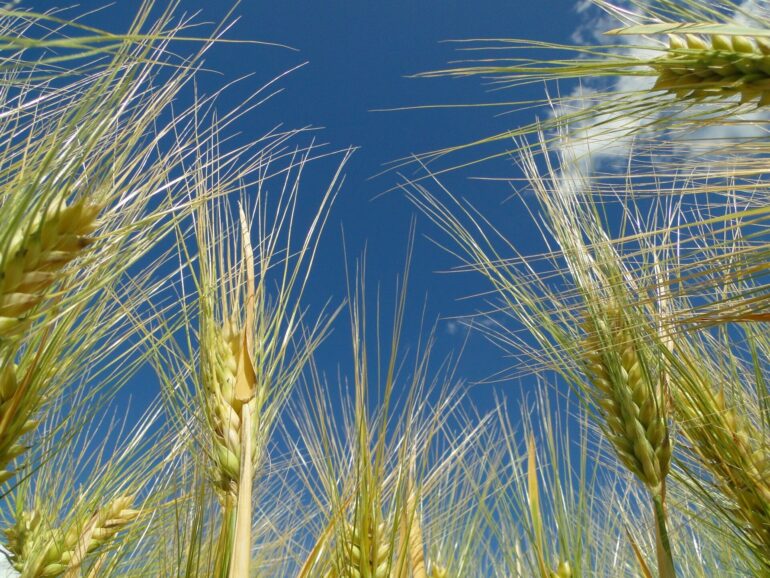Modifying inflorescences with higher grain capacity is vital for crop grain production. One recurring target is to select inflorescences with more branches or floral structures. Prominent examples include genes affecting floral identity or meristem determinacy, for which natural or induced variants profoundly change floral primordium number. Yet for temperate cereal crops, such as wheat and barley, excessive floral structures can result in a degeneration penalty due to the indeterminate nature of meristems. On the other hand, the manifestation of this reproductive potential can be accentuated by environmental fluctuations such as light, temperature and nutrition. Increasing the fraction of surviving florets/spikelets may thus improve grain yield in cereals.
Now, IPK reserachers unveiled a previously unrecognized mechanism by which signals in the vasculature of the barley inflorescence control plastid differentiation and nutrient signaling, thereby sustaining heterotrophic floral meristem growth and reproductive success. Their results prove that the circadian clock of the vasculature is required for a timely switch from the floral primordia initiation state to the growth state.
By conducting large scale floral meristem dissection and phenotyping, the researchers show that approximately 40% of the initiated floral primordia set grains while the rest are aborted, representing an untapped yield potential. “We further show that the number of initiated floral primordia is largely determined by flowering time genes, but the fates of the distal floral primordia are controlled by at least three independent quantitative trait loci”, says Dr. Yongyu Huang, first author of the study.
“We identifed for the first time a vascular-expressed CCT Motif Family gene (HvCMF4) that is required for spikelet primordia growth and successful pollination”, says Dr. Yongyu Huang. Moreover, the research team showed that HvCMF4 specifically functions after the initiation of spikelet primordia through the wiring of the circadian clock from the inflorescence vasculature to control greening of the neighboring tissue; and thus, autotrophic energy production. “This grain number determination mechanism has not been described before and appears to be unique to the Triticeae species, which features early inflorescence greening during spikelet initiation and differentiation.”
“Our study evokes a new avenue for boosting grain yield, highlighting the possibility of increasing grain number not just by gaining more floral primordia but also by convoying them until maturity”, says Prof. Dr. Thorsten Schnurbusch, head of IPK’s research group “Plant Architecture” and Professor for Developmental Genetics of Crop Plants at Martin Luther University Halle. “As barley is amongst the most important cereal crops in the world (number four after rice, maize and wheat), better exploiting its grain yield potential can thus contribute to world food security and thereby directly help fight against hunger threats imposed by climate change, natural or war disasters.”
More information:
Yongyu Huang et al, A molecular framework for grain number determination in barley, Science Advances (2023). DOI: 10.1126/sciadv.add0324. www.science.org/doi/10.1126/sciadv.add0324
Provided by
Leibniz Institute of Plant Genetics and Crop Plant Research
Citation:
IPK researchers provide insights into grain number determination mechanism of barley (2023, March 3)
